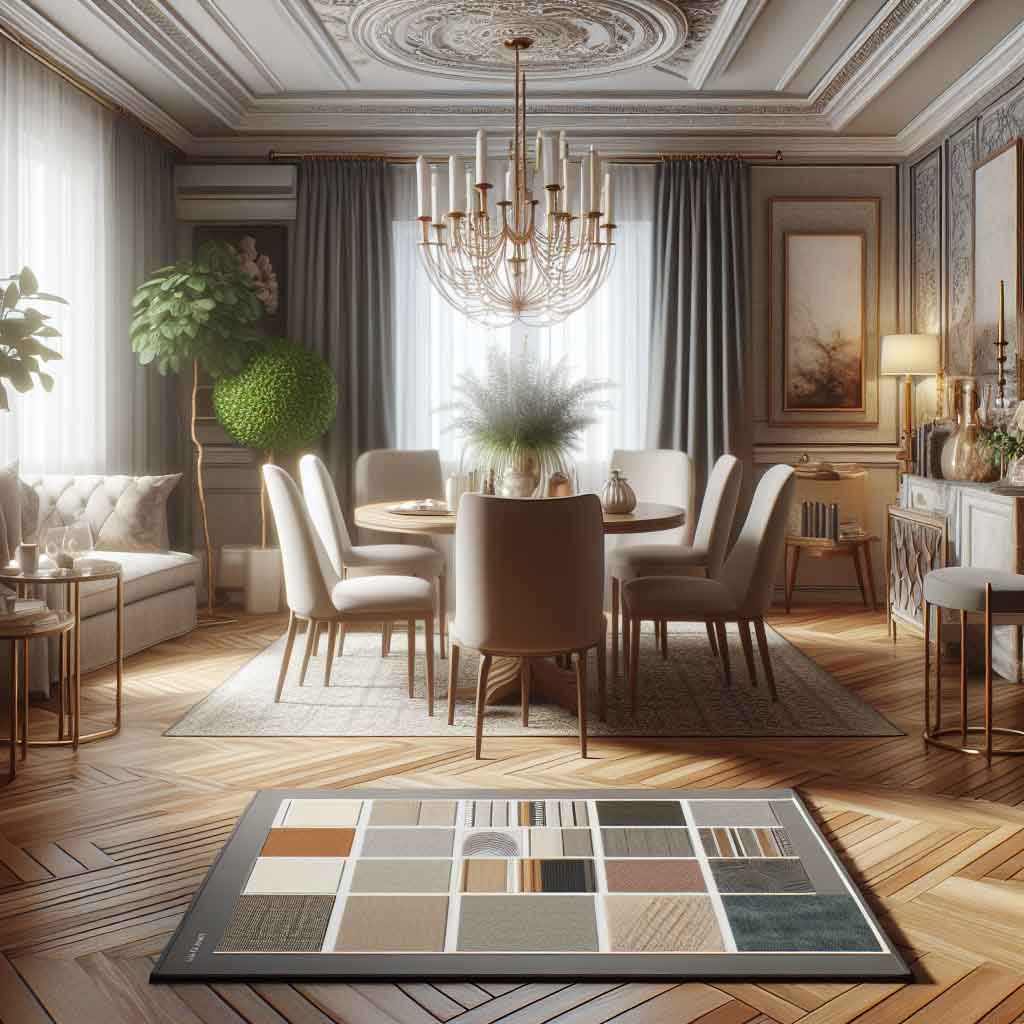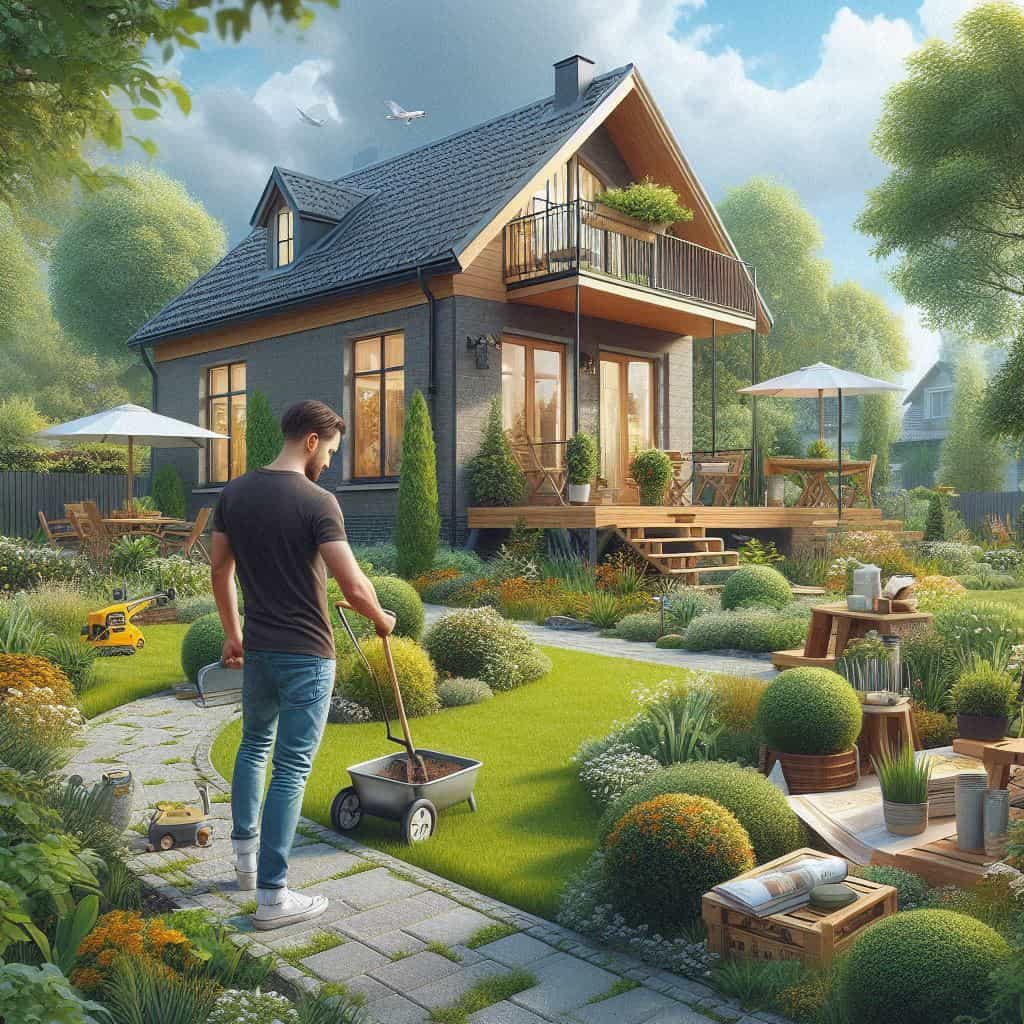Designing a dining room is a key step in creating a cozy and functional interior that meets your needs and lifestyle. This stage involves considering various aspects, from the room's size and location in the house to the selection of furniture and lighting.
Size and layout
The first step in designing a dining room is determining its size and layout within the house. It's essential to consider not only the room's square footage but also its shape and the placement of windows and doors. This allows for the optimal use of space and the creation of a comfortable and functional area for dining and socializing.

Furniture layout in the dining room
Furniture layout is a crucial aspect of designing a dining room. It's important to consider not only the size of the furniture but also its functionality and how it fits with the overall interior. Providing an adequate number of seating places and arranging tables and chairs for comfortable dining are key considerations.
Interior style of the dining room
The choice of interior style for the dining room sets the overall atmosphere of the space. At this stage, it's important to decide on a color scheme, wall and ceiling finishes, as well as select suitable furniture and accessories. Consider your preference for a classic, modern, or eclectic style to create an interior that reflects your taste and lifestyle.
Lighting and illumination in the dining room
Lighting plays a crucial role in creating a cozy atmosphere in the dining room. During the planning stage, it's important to consider natural light from windows and provide additional sources of light for evening or low-light conditions. Having a primary, powerful light source directly above the dining area (above the table) and multiple secondary, less intense light sources around the room is essential.
- Types of lighting:
- General lighting - for uniform illumination of the entire room. Typically, ceiling fixtures or chandeliers are used, which can be dimmable to create different atmospheres during meal times.
- Task lighting - for illuminating specific areas, such as the dining table or decorative elements. This lighting can be achieved with table lamps or spotlights.
- Decorative lighting - for creating a cozy atmosphere in the dining room. This can include pendant lights or candles, adding charm and individuality to the interior.

Design and practicality: how to combine necessary functionality with beauty and convenience
When designing the interior of a dining room, it's important not only to focus on its appearance but also to consider various practical aspects that will ensure comfortable and convenient use of the space. How can you combine necessary functionality with beauty and convenience? Let's find out.
- Practicality
When choosing materials for finishing the floor and walls of the dining room, it's important to consider their functionality and practicality. The floors and walls should be easy to clean and resistant to damage to ensure durability and ease of maintenance. At the same time, the chosen materials should match the overall style and design of the room to create a harmonious and cozy space.
- Functionality
When designing a dining room, it's important to focus on its functionality. It's essential to provide all the necessary interior elements that will make the stay in the dining room comfortable and convenient. These can include additional countertops, cabinets for storing dishes and cutlery, as well as other elements that will simplify everyday life and create a functional space for dining and socializing.
For example, if you decide to install an electric fireplace, you can cover it with a wooden tabletop to enhance coziness and use it as a table for drinks and desserts.
Design and practicality in the dining room should go hand in hand to ensure a comfortable and functional space for dining and socializing. When designing the interior, it's important to consider all aspects, from the placement of electrical outlets and ventilation to the choice of practical materials for finishing the floor and walls. It's important to strike a balance between beauty and functionality to make your dining room not only beautiful but also convenient to use.

What furniture should be in the dining room
The dining room is the center of family gatherings and meals, so its furnishings should be functional, comfortable, and aesthetic. Let's consider what furniture and lighting should be present in the dining room to create a comfortable and inviting atmosphere.
- Dining table – the key element of the dining room. It should be spacious enough for all family members and guests and correspond to the interior style. The size of the table depends on the room's area and the number of people who usually dine there.
- Chairs – to ensure comfort during meals, it's important to choose comfortable and ergonomic chairs. They should be sturdy and stable to ensure safety and comfort during use.
- Cabinets or buffet – for storing dishes, cutlery, and other necessary items. Cabinets can be open or closed, depending on preferences and the interior style.
- Sideboard or server – for convenient storage of dishes, bar accessories, or decorative items. This is a functional element that can also enhance the dining room's interior.
Furniture and lighting play a key role in creating a cozy and functional dining room. When choosing furniture, it's important to consider its comfort and compatibility with the interior style, while lighting should be functional and create a pleasant atmosphere during meals. Creating a harmonious and aesthetic interior in the dining room will make meals and family gatherings even more enjoyable and memorable.

Conclusion
Creating a cozy and functional dining room requires attention to the smallest details. Separated from the kitchen, the dining room becomes the center of family dinners and gatherings, so it's important to plan its interior carefully, considering both aesthetic and practical aspects.
The design process begins with determining the room's size and layout, choosing furniture, and lighting. The furniture should be comfortable and functional, while the lighting should be bright and comfortable. It's also important to pay attention to decorative elements that add coziness and individuality to the dining room.
At the same time, practicality should not be overlooked: electrical outlets should be conveniently placed, ventilation should be effective, and the flooring and wall coverings should be easy to maintain.
Combining all these aspects – from functionality to design – will help create a dining room that is not only the center of family gatherings but also a cozy and functional space for dining and socializing.



